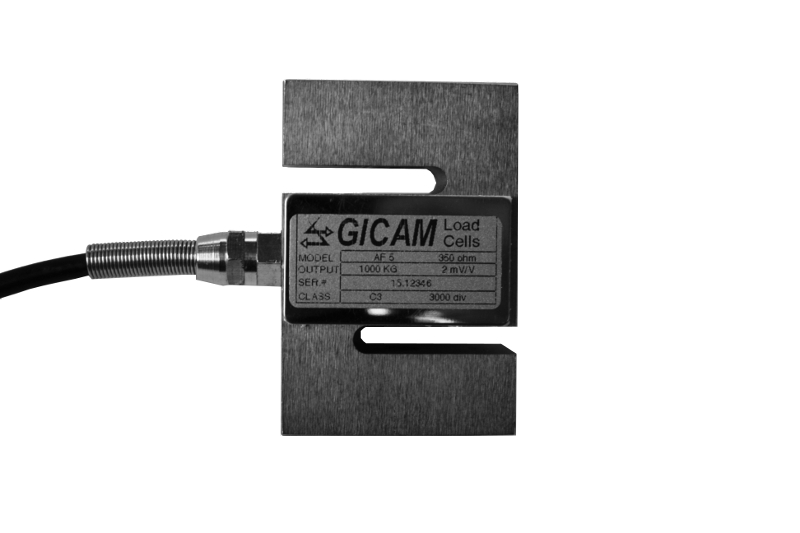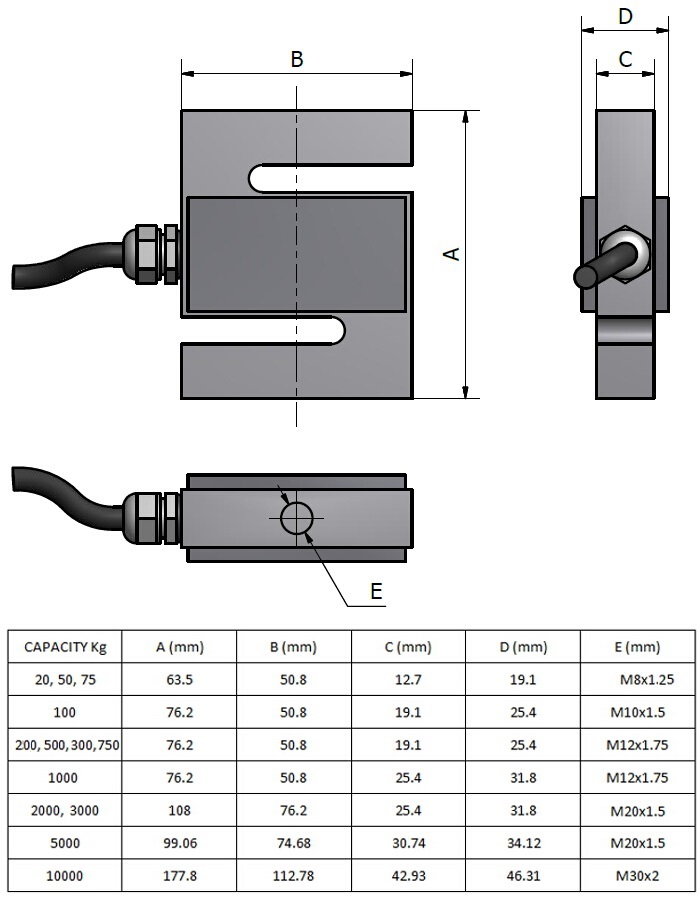Tension load cells for hoppers weighing, strength of linkage levers, and weigh scales, suspended weighing with ropes and rods etc.
Load cells for small capacity weighing systems. Universal use and low cost load cells.
![]() Click to enlarge image
Click to enlarge image




| Material | Nickel-plated steel |
| Nominal load | 20, 50, 75, 100, 200, 300, 500, 750, 1000, 2000, 3000, 5000, 10000 kg |
| Limit load | 150 % F.S. |
| Breaking load | 300 % F.S. |
| Maximum transversal load | 100 % F.S. |
| Supply voltage | Vcc 15 Max |
| Output | 2 mV/V |
| Output tollerance | 0,1 % F.S. |
| Zero tollerance | 1 % F.S. |
| Linearity | 0,03 % F.S. |
| Hysteresis | 0,03 % F.S. |
| Reapeatability | 0,02 % F.S. |
| Input resistance | 370 - 400 ohm |
| Output resistance | 350-353 ohm |
| Insulation resistance | >= 2000 Mohm |
| Creep (30 Minutes) | 0,03 % F.S. |
| Thermal compensation | -10 / +40°C (14 / +104°F) |
| Operating temperature | -20 / +60°C (-4 / +140°F) |
| Temperature deviation zero | 0,02 % F.S. / 10°C |
| Temperature deviation full scale | 0,02 % F.S. / 10°C |
| Protection class | IP 65 |
| Standard cable length | 5 m – 4 x 0,25 (shield not connected to the load cell body) |
| Type | SHIELDED CABLE 4C R5 PVC 4X0,25 |
| Length | 3 m (body lead cell not connected shield) |
| Red | + IN |
| Black | - IN |
| Green | + OUT |
| White | - OUT |
General precautions to be followed in the installation and assembly of load cells: